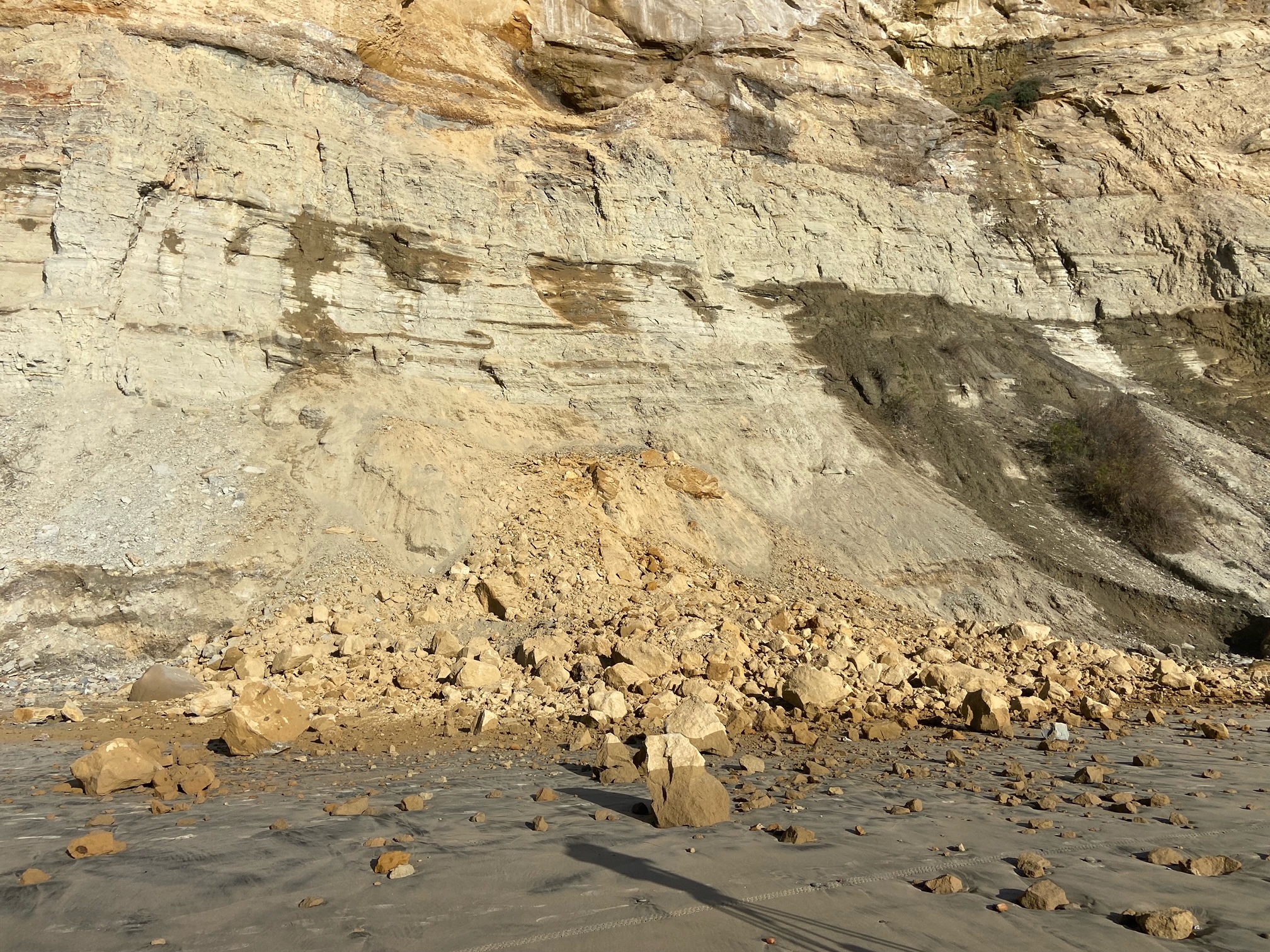It’s a race against the rain as Encinitas city workers try to stabilize a growing sinkhole on Lake Drive. Rainfall last Friday totaling 1.3 inches caused the pre-existing sinkhole on Lake Drive to expand.
Patricia Dunlap, who lives nearby said, “It’s getting bigger and bigger with more rains coming. It’s a scary thing.”
Geologist Dr. Pat Abbott said sinkholes occur naturally in some states, like Florida. But not in San Diego County.
San Diego is Eroding
Get top local stories in San Diego delivered to you every morning. Sign up for NBC San Diego's News Headlines newsletter.
“When we have a collapse, it’s a failure of human infrastructure. That’s a drainage pipe maybe made of cast iron that rusted away or whatever. But at the beach it's 100% mother nature.”
Dr. Abbott is referring to naturally occurring events like a bluff collapse at Black's Beach on Jan. 20.
The collapse, which occurred a couple of hundred yards south of the Torrey Pines Gliderport, was estimated to be 250 feet wide and 25 feet high.
Abbott said there are many things that contribute to cliff failures including waves eating at the base, gravity pulling on it constantly, less sand on the beach in the winter and higher tides. But rain over a long period of time is also a contributing factor.
He pointed up to a cliff on Tuesday at Torrey Pines State Beach, “That fracture, that crack is running parallel to the face. That means that sandstone layer has already been broken. It's cut through as if with a knife, so gravity is pulling on it, it has already begun its movement to the beach. These repeated rainfalls help load the ground with water and push them closer to failure,” said Abbott.
He also pointed out mounds of rocks and sand at the base of a cliff. “When you look at this mass right here, look how fresh it is,” Abbott said. “I say don’t walk along the cliffs, walk along the water line, don’t put your beach blanket against the cliff, put it as close to the wave as you can, you never know when these things are going to come down.”



